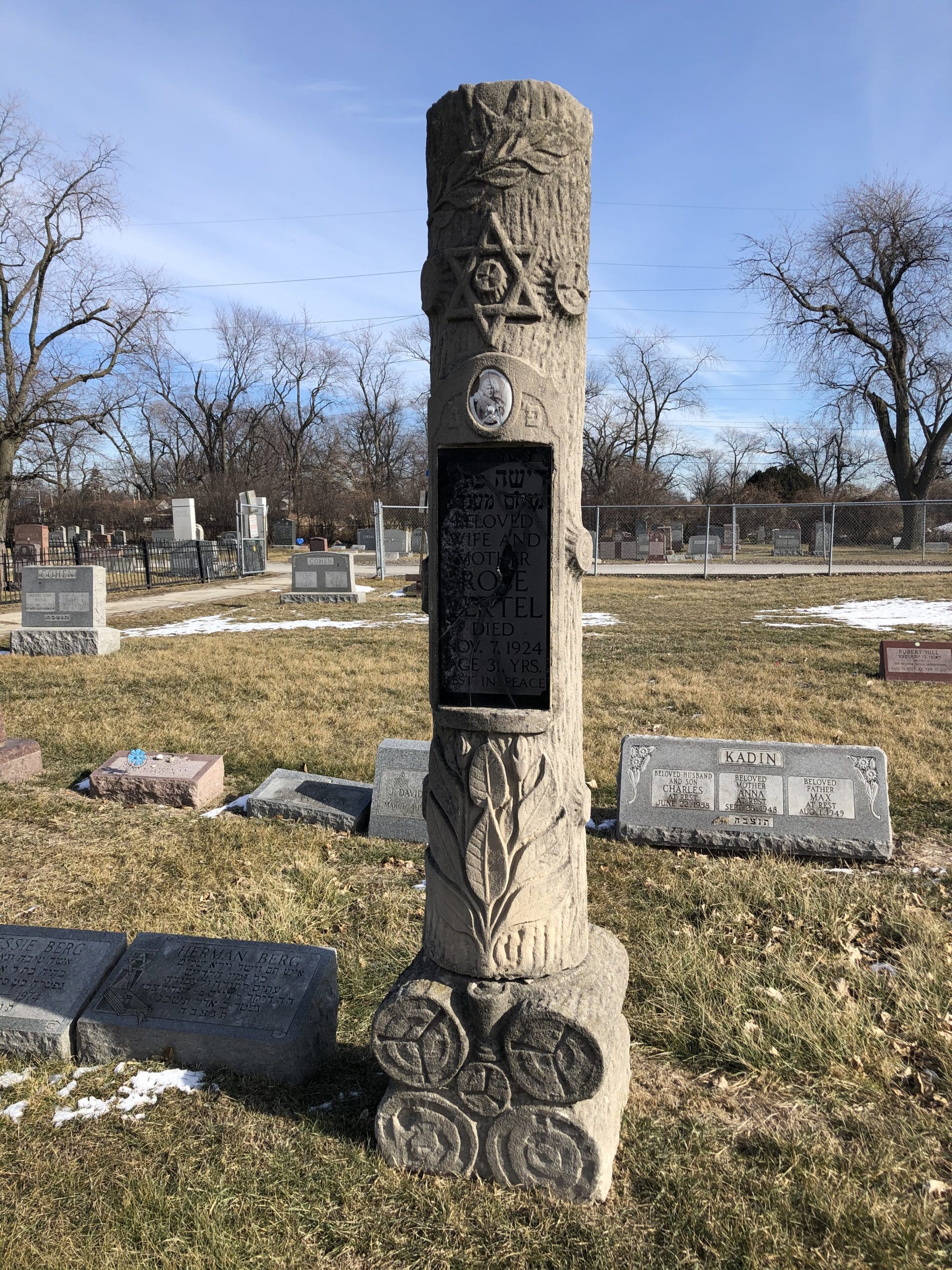February 28, 1891 – November 7, 1924
Rose was born in Kiev to Max and Anna (Manchewsky) Kadin, but she and her parents immigrated to the US just two years later in 1893.
The family was almost certainly fleeing the pogroms which ravaged Jewish communities throughout the southwestern part of Imperial Russia (present-day Poland and Ukraine) at the end of the 19th century and beginning of 20th. A major anti-Jewish riot was known as the Kiev Pogrom of 1881 and the initial violence lasted three days. Though the Kadin parents were likely children during that terrible time, the hostility and violence left a lasting mark and led to more and more violent pogroms which must have played a role in the decision to leave their home with their young daughter.
Rose’s little brother Charles was born in Chicago in 1896, the first US citizen of the family (her father’s naturalization record is from June 1900 and a later census indicates Anna was also naturalized at that time; not sure if Rose became a citizen by default back in those days but she doesn’t indicate a date on that same census for herself). What is becoming a trend in these histories regarding census takers and factual errors, some confusion in 1910 causes Charles to be listed as having been born in Russia along with the rest of his family but by 1920, he’s back to Illinois.
In 1900, the family is living in a flat in the Pulaski Park neighborhood (which is very different now thanks to both the construction of I-90 and 120 intervening years). Their building, which was on Milwaukee, looks to have been replaced by newer multi-unit buildings probably post-war. The census indicates that Max is working as a laborer, and he’s listed as able to speak English (Anna is not). They also have a boarder living with them who works as a Ladies Tailor.
By 1910, they’ve moved to a flat in a charming building on Western that is still there (the location is in the Wicker Park neighborhood, just west of where they were living before and just north of Ukranian Village). Max is working as a hat-framer and appears to have his own shop (he’s listed as an employer rather than a wage-earner). In the intervening ten years, Anna has learned English. Rose is eighteen and working as a saleswoman at a millinery, a very Edwardian-era job.
On September 21, 1912, Rose married David “Dave” Vertel (b April 3, 1889) who immigrated from Russia in 1907 (just after another wave of violent pogroms), and by 1920, Rose and Dave have two sons with extremely era-appropriate names: Irving (1913) and Harold (1919), and Rose’s parents and brother are living with them (Dave is listed as the head of the household).
The building looks as if it was a four-flat just around the corner from the Kadin family’s 1910 home, but there appears to be a high school where any residences once were. Everyone living in the building and most neighbors are from Russia so this is clearly an enclave even though they are outside the borders of (to be fair) the current Ukranian Village neighborhood.
Dave is working as a coatmaker for a raincoat company; and Max is working for the city, I think as a foreman (bad handwriting); Charles is also living with them but is working as a jeweler. He served in WWI so would have only been back recently and later the same year, he married a young woman named Tillie Rosenberg.
Rose’s is another too-early death for which we have no listed cause. Her age suggests a child-bearing-related cause, but as is frequently the case, there is no way to know for sure. Her obituary indicates that she was a member of the Star of Keystone chapter of the Order of the Eastern Star.
I did not realize it at the time since I didn’t know her maiden name, but Rose’s parents and brother Charles are buried in the row just behind her. I believe I looked for other Vertels and didn’t find them, but now I know she isn’t alone so that makes me happy. Her sons lived long lives and moved away from Illinois, Irving dying in California in 1996 and Harold dying in Texas in 2009. Dave is buried at Waldheim, perhaps nearby. I didn’t find any record of his remarriage and his findagrave lists no spouse other than Rose.
Rose’s headstone is an interesting variation on the tree stump style – which was a bit past its heydey at the time of her death – a sort of brutalist naturalism that I really like and is a fairly common twist on the style in this cemetery. It’s fascinating to see the concept reimagined yet again in an entirely different way by the sculptors working in Waldheim versus those working in Forest Home and Concordia.
Sadly, the photo and information plate on her headstone are both cracked. I suspect trees rather than vandals as there are large trees just behind where I was standing taking this picture. Her photo has some wear issues aside from the cracking, and it’s difficult to make out anything but her lovely face.
RIP Rose and family.
Please visit my Instagram for any questions or comments on this post!
